
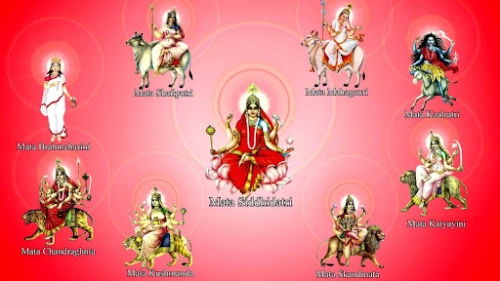
What ARE THE NINE INCARNATIONS OF MAA DURGA AND THE HISTORY BEHIND THEM
BY : Neha Jain – Cultural & Festival Content WriterTable of Content
What are the Nine Incarnations of Maa Durga and the History Behind Them
Durga (Sanskrit: नवदुर्गा, lit nine forms of Durga), are the nine manifestations of the goddess Durga in Hinduism, especially during the Navratri and Durga Puja period. Each of the nine figures shown is venerated separately during the night during the festival. The nine incarnations of Durga or Parvati are: Shailputri, Brahmacharini, Chandraghanta, Kushmanda, Skandamata, Katyayani, Kaalratri, Mahagauri and Siddhidatri. During the Hindu festival of Navratri, she worships and feeds nine unmarried girls up to the age of nine. This custom is also known as Kumari Puja, Kanya Puja, Kanjak Puja, etc. Even the Napapatrika ritual during Durga Puja involves attaching the branches of eight plants with their leaves to the banana plant. (Nappa means nine and patricia means nappatrica or nine leaves). The eight branches of the plants with their leaves attached to the banana plant are known as napapatrica, then this banana plant is wrapped in a sari that represents a married woman as a ‘Boo’ which is why it is known as 'kula boo' . Married woman, hence Kolabou or Married Banana Woman. Kola Bou represents these nine devis.
So, let's take a quick dive into the following points:
1. Shailputri represents Parvati in childhood. She knows the mountain and is the daughter of the King of the Mountain, Lord Himavan and Queen Minavati. Having abandoned the Sati form of her, the goddess was born in the avatara of Shilputri Parvati. Since her birth, she has felt a bond with Lord Shiva. Maa Parvati was born as an ordinary woman to achieve the position of a goddess on her journey to become one with Lord Mahadev. She is that avatar of a little daughter that makes her family and parents happy, happy and proud of her. Shailputri is milky white in complexion, with three assured eyes and a soothing calm. She was lightly decorated in her fringes and wore red and pink robes. She has two hands holding a trident and a lotus. She sits on the back of a white bull.
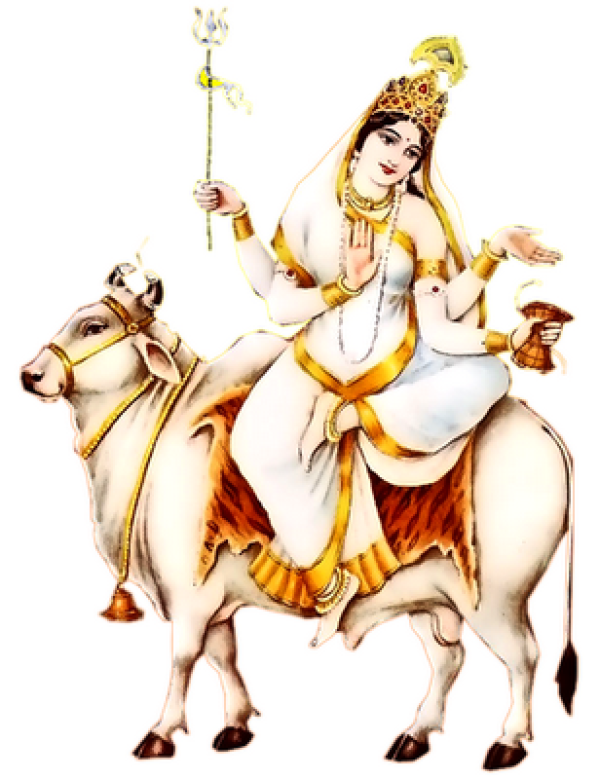
2. Brahmacharini represents Parvati in the ascetic stage. Parvati obtained this trait due to her strict and cruel penance for making Lord Mahadev her husband for years. This form of hers is close to her because, like Parvati, she was meditating to become one with Shiva again in the name of Shakti, ensuring the integrity of her motive. To be a Brahmacharini, Parvati Mahadev not only woke up from her penance, but also awakened this form of herself within her when she broke the rules of living life as a normal human being. She is a student and student whose mission is to achieve her life goals during the difficult period of her education. The Brahmacharini is fair-skinned, has three dependable eyes, and a calm breed. She was dressed as an ascetic woman and adorned with dried Rudraksha beads and flowers as an ornament. She has her hands holding a rosary and a bowl of water.
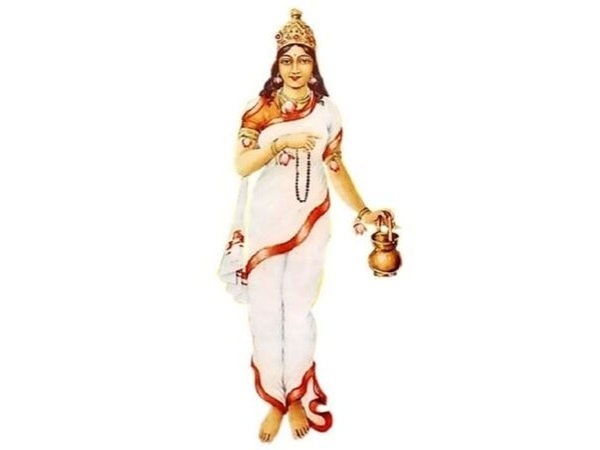
3. Chandraghanta represents Parvati on her married side. Lord Mahadev himself gave this title to Parvati, due to his desire to be Lord Chandradev, the god of the moon, to adorn her as an ornament on his forehead, as his lord adorned him on his crown of woven hair, as shown to the world. . More from Chandrashekhara. By fulfilling his wish, Mahadev transformed her wedding look into a new look with a new name. As she is now adorned with the number of the crescent moon on her forehead, Parvati will be known throughout the world as Devi Chandraghanta. She is also that aspect of the independent woman who fights for justice and peace and makes her voice heard to generate positive changes. Chandraghanta has golden skin, three bloodshot eyes, and a calm face. She was decorated with heavy fringes on her fringes and wore a red robe. Her crown is decorated with a crescent shield. She has ten hands, nine of which are armed with a trident, a mace, a bow, an arrow, a lotus, a sword, a bell, and a bowl of water, while another hand blesses her followers. She is sitting on a ferocious tiger.

4. Kushmanda Devi represents Parvati in her stage show in which she discovers that she is none other than Mahashakti. After her marriage, Lord Mahadev made Goddess Parvati know the truth of her true existence. This form is known throughout the world as kushmanda, as it carries with it the many infinite powers of the world. Lord Mahadev helped her to realize the fact that she is not just a human being, she is a goddess and she is the mother of the world and of all creation, as she produced the three planes of her through the womb. golden of it. She is that side of a woman that illuminates the lives of those around her through her joy. She is Kushmanda with golden skin, three gentle eyes, and a calm square. He was decorated with ornaments around the edges and was dressed in pink and yellow clothes. He had eight hands, six of which held a disk, a scepter, a lotus, a bow and an arrow in one hand, a sword and a rosary, and the other two hands held a pot of honey and a bowl of water. She rides on the back of a lion.
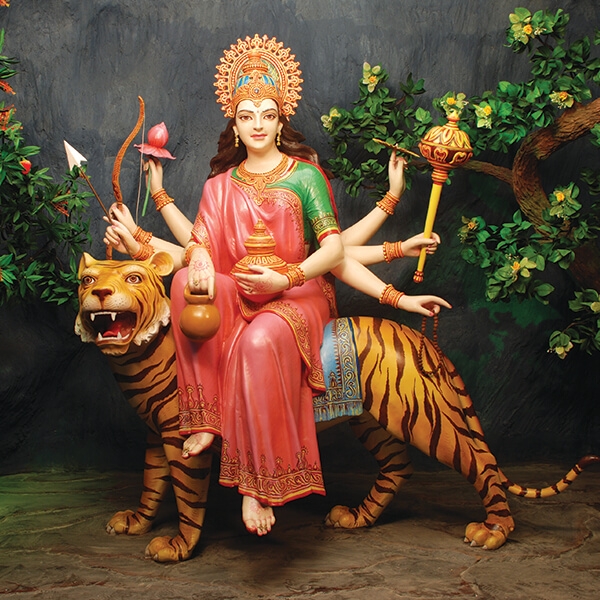
Also see - Chaitra Navratri 2020: इस दिशा में पूजा करने से मिलेगी मां दुर्गा की कृपा
5. Skandamata Devi represents Parvati in her motherhood. It is known that Parvati is the mother of Skanda, her son Kartiki. Parvati was removed from the care of her son from the Kritikas family of six. When the seed of energy devised by Shiva and Parvati, fell into a sleeve of reeds, it split into six children, as found by six women, and after a fair solution, Shiva and Parvati merged the six children into a baby with six faces. Everyone will know him as Shanmukha (Six Faces) and as the mother of this unique child, Parvati will be known as Skandmata. Also, since baby Shanmukha Skanda was found by six Krittikas, he will be known as Kartickeya, because he is her son, as well as the son of Shiva and Devi. Skandmata is motherhood, affection and love in a woman. Although any child can be biological, adopted or by surrogacy, she is still a mother. Skandamata is golden-skinned, has three eyes, and is a quiet area. She is decorated with light decoration around the edges of her and wears orange and yellow clothing. She has four hands, two of them hold a lotus flower, the third holds her son, the six-headed infant Kartikeya is sitting on her lap, and the fourth rescues the devotees.
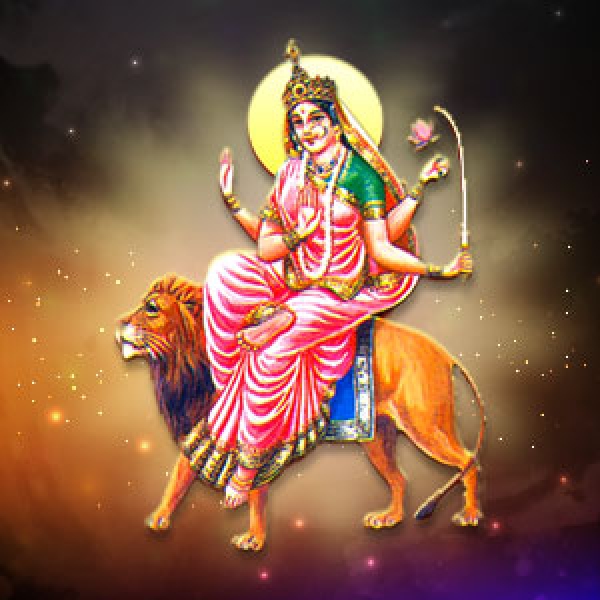
6. Katyayani represents Parvati in her warrior theater. When the gods summoned Mahashakti to protect them from the demon Mahishasura, Parvati incarnated from a sacrificial fire in the avatar of ten armed deities, who later came to be known as Katyaani, as she was born in the house of the sage Katyayan as his daughter and killed the damn demon after a long fight. She is that avatar of a woman who shows that she is not weak when the question of protecting her is raised, that she can often protect men as well. Katyayani has a fused golden complexion, three staring eyes, and a relaxed face. She is adorned with heavy trim on the edges and wears green and pink dresses. Her four hands held a sword, a shield, a lotus, and a trident. She saw a terrifying lion.
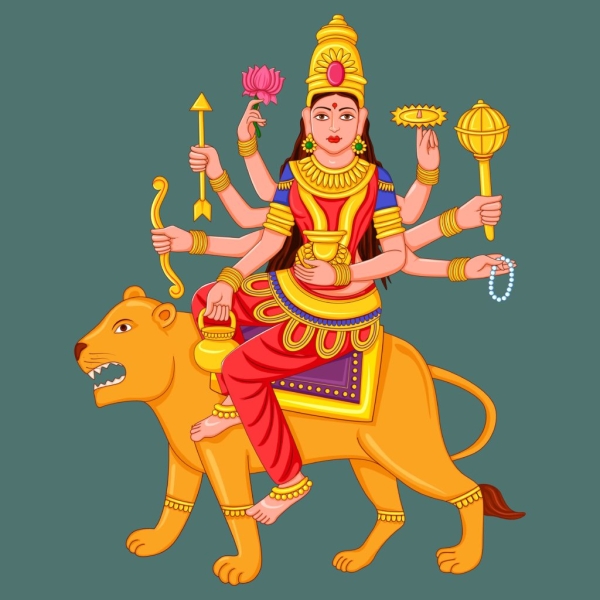
7. Kalratri represents Parvati in the stage of her destruction. She is called the goddess of time and death because she is above her and beyond her rule because she controls the moment when someone's death comes and is beyond darkness. She is also that side of a woman who is constantly angered by injustice and struggles to save society because she is aggressive and can cause destruction when she crosses her threshold. Calratri is dark-skinned with a fierce expression. They are decorated with electric ornaments on their fringes and are dressed in red and black robes. She has three bloodshot eyes, shaggy hair, and wears a crown of skulls around her neck, which glows like lightning. Her four hands held a spear, a spear, a scimitar, a vajra, and a cup. She sits on the back of a donkey like her carriage.
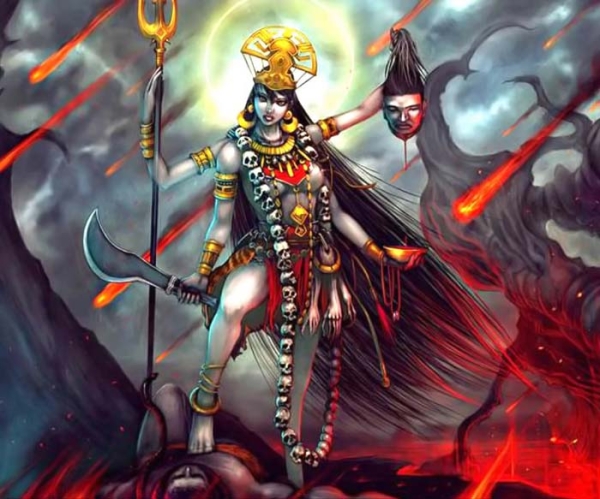
8. MahaGauri represents Parvati in recovery. Having embraced Kaali's form, Parvati returned to her normal form but her skin as black as night clung to her figure. Following Lord Brahma's direction, she plunged into the Manasarovara River and then came back, radiant like the moon and shining with her white clothes and ornaments. This form of Parvati was known worldwide as Mahagauri. She is also the avatar of a woman like a homemaker, devoted wife, and foster mother, because she is the only one who forms the foundation of the family. The Mahaguri is fair-skinned, with three peaceful eyes, and a calm expression. They are adorned with light white trim on their edges and are dressed in white. She has four hands, three of which hold a trident, a small drum, and a pink lotus, while her hand promised him protection. She sits on a white bull.
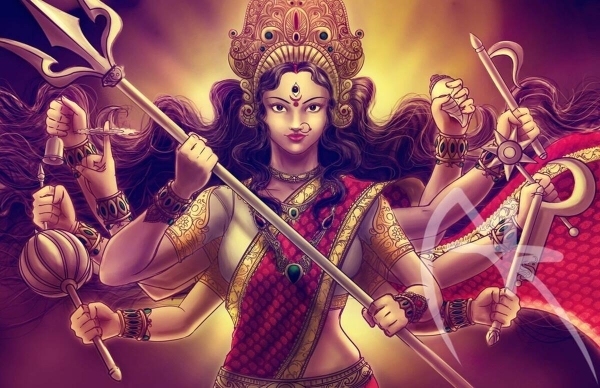
9. Siddhidhatri Devi represents Parvati in her stage of reaching her highest levels and highest forms, knowing who she is, as she established herself as the full manifestation of Goddess Mahashakti and thus reached her stature to become a goddess. Siddhidatri has all supernatural powers and is one with Lord Shiva in the role of Ardhanarishwara. She is the avatar of a woman. Who is the source of life and provides education, teaching skills, and discipline to her children. Siddhidhatri is fair-skinned, with three happy eyes, and a quiet stillness. She was lightly decorated on her fringes and wore red and blue robes. Each of her four hands held a disc, a conch, a trident, and a scepter. She is sitting on a lotus flower in full bloom.
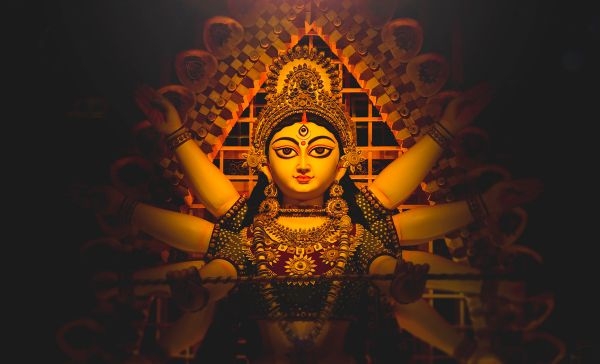
Also Read - HISTORY, MEANING AND IMPORTANCE OF NAVRATRI - StarzSpeak
Author: Neha Jain – Cultural & Festival Content Writer
Neha Jain is a festival writer with 7+ years’ experience explaining Indian rituals, traditions, and their cultural meaning, making complex customs accessible and engaging for today’s modern readers.






.png)